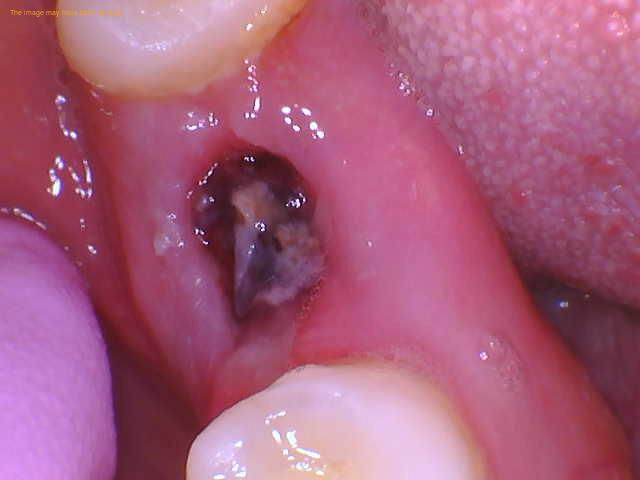Gum Infection After Extraction: Heal Faster Naturally

The dreaded gum infection after extraction - a common complication that can plague even the most meticulous of dental patients. While it’s true that some degree of discomfort and inflammation is to be expected after a tooth extraction, a full-blown gum infection can be a real setback. Fortunately, there are several natural remedies and strategies that can help alleviate symptoms, promote healing, and get you back on the road to recovery in no time.
To understand how to tackle a gum infection after extraction, it’s essential to grasp the underlying causes. When a tooth is extracted, the gum tissue and bone are left vulnerable to bacterial invasion. If the extraction site becomes infected, it can lead to a range of unpleasant symptoms, including swelling, redness, pain, and discharge. In severe cases, the infection can even spread to other parts of the body, making prompt treatment crucial.
One of the most effective ways to combat a gum infection after extraction is through the use of saltwater rinses. By dissolving 1⁄2 teaspoon of salt in 8 ounces of warm water, you can create a natural antibacterial solution that helps reduce swelling and kills harmful bacteria. Rinsing the extraction site with this solution several times a day can work wonders in promoting a healthy environment for healing.
Another natural remedy that’s gained significant attention in recent years is the use of turmeric. This versatile spice contains a powerful compound called curcumin, which has potent anti-inflammatory and antibacterial properties. By mixing 1 teaspoon of turmeric powder with enough water to form a paste, you can create a topical treatment that can be applied directly to the affected area. The curcumin in turmeric has been shown to reduce inflammation, alleviate pain, and even prevent the growth of harmful bacteria.
In addition to these remedies, there are several other strategies that can help promote healing and prevent further complications. For instance, maintaining good oral hygiene is crucial, even when you’re recovering from an extraction. Gently brushing the surrounding teeth and using a soft, damp cloth to clean the extraction site can help prevent the accumulation of bacteria and food particles. It’s also essential to stick to a soft food diet, avoiding hot, spicy, or sharp foods that can irritate the extraction site.
Ultimately, the key to healing faster from a gum infection after extraction lies in a combination of natural remedies, good oral hygiene, and a healthy diet. By incorporating these strategies into your daily routine, you can help alleviate symptoms, promote a healthy environment for healing, and reduce the risk of further complications. So, the next time you find yourself dealing with the aftermath of a tooth extraction, remember that nature has provided us with a plethora of tools to aid in our recovery - it’s just a matter of harnessing their power.
Healing Faster from Gum Infection After Extraction: A Step-by-Step Guide
- Rinse the extraction site with saltwater solution several times a day to reduce swelling and kill bacteria.
- Apply a turmeric paste to the affected area to reduce inflammation and prevent bacterial growth.
- Maintain good oral hygiene by gently brushing the surrounding teeth and cleaning the extraction site with a soft, damp cloth.
- Stick to a soft food diet, avoiding hot, spicy, or sharp foods that can irritate the extraction site.
- Incorporate foods rich in omega-3s, such as salmon and walnuts, into your diet to reduce inflammation and promote healing.
In conclusion, while a gum infection after extraction can be a frustrating setback, it’s not a guarantee of prolonged suffering. By leveraging the power of natural remedies, maintaining good oral hygiene, and adopting a healthy lifestyle, you can help your body heal faster and reduce the risk of further complications. So, the next time you find yourself facing this challenge, remember that nature has provided us with the tools to overcome it - it’s just a matter of using them wisely.
What are the symptoms of a gum infection after extraction?
+The symptoms of a gum infection after extraction can include swelling, redness, pain, discharge, and fever. If you experience any of these symptoms, it’s essential to seek prompt medical attention to prevent further complications.
Can I use over-the-counter pain medication to manage pain after extraction?
+Yes, over-the-counter pain medication such as ibuprofen or acetaminophen can be used to manage pain after extraction. However, it’s essential to follow the recommended dosage and consult with your dentist or doctor before taking any medication.
How long does it take for a gum infection after extraction to heal?
+The healing time for a gum infection after extraction can vary depending on the severity of the infection and the effectiveness of treatment. With proper care and attention, most gum infections can be resolved within 7-10 days. However, it’s essential to consult with your dentist or doctor to determine the best course of treatment and to monitor your progress.

